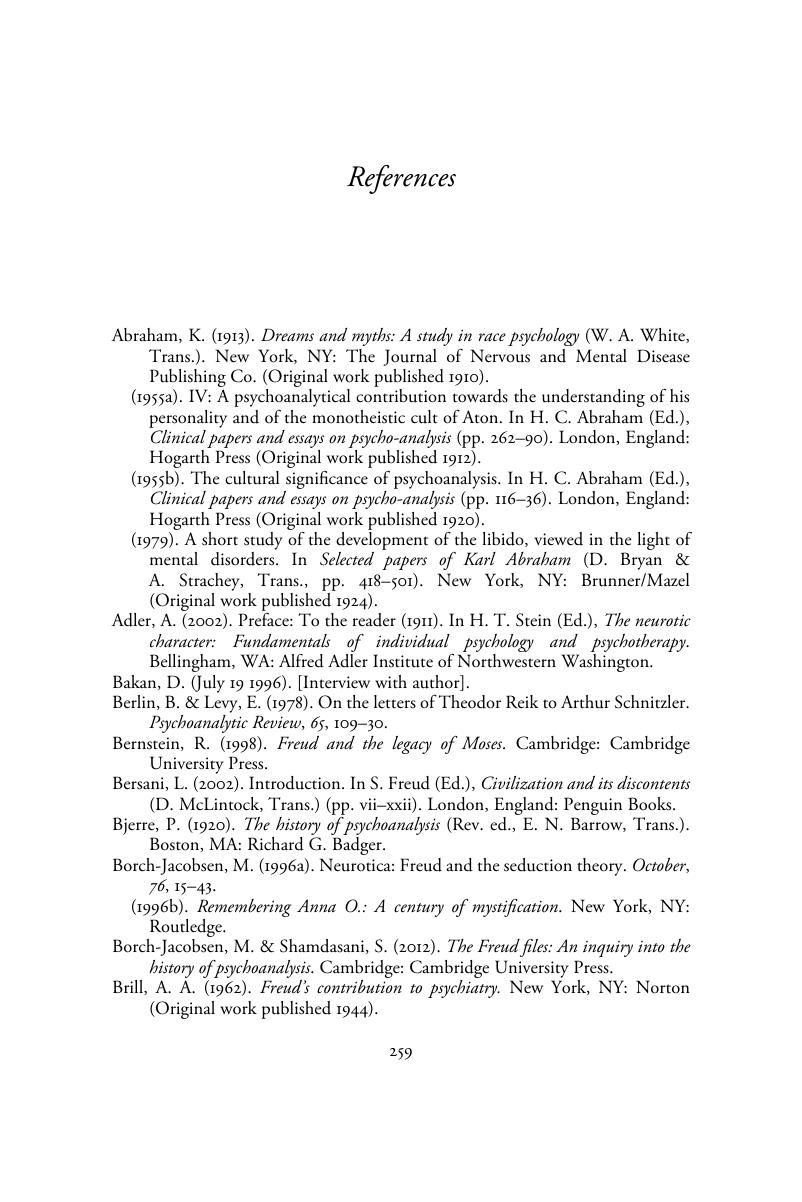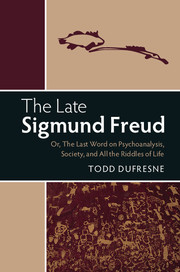Book contents
References
Published online by Cambridge University Press: 13 April 2017
Summary

- Type
- Chapter
- Information
- The Late Sigmund FreudOr, The Last Word on Psychoanalysis, Society, and All the Riddles of Life, pp. 259 - 269Publisher: Cambridge University PressPrint publication year: 2017



